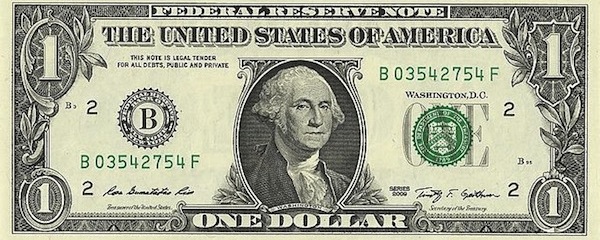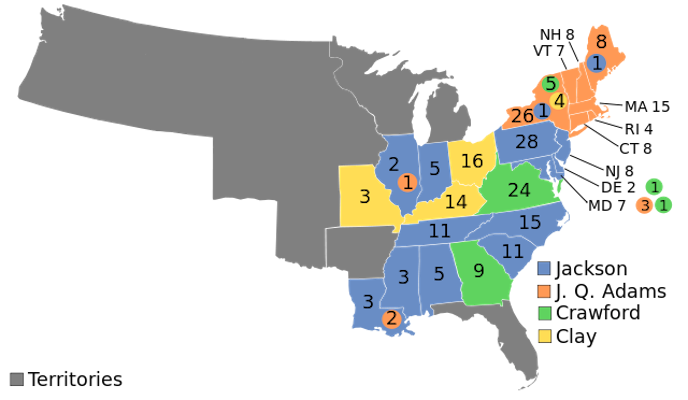Why hasn’t their popularity faded? Didn’t we expect them to collapse months ago? How are there still supporters who don’t realize how terrible this is? Donald Trump: the ISIS of candidates.
Category Archives: Commentary
The origin story of minimum wage laws, part 1
Part 1: New Zealand, Australia, Massachusetts, the New Deal, and China: How governments took an active role initially, and how they balance economic variability now. || This original research was produced for The Globalist Research Center and Arsenal For Democracy.
More than 150 countries have set minimum wages by law, whether nationwide or by sector. Other countries have no legal minimum, or governments play a different role in wage setting processes.
Where in the world did government-set minimum wages originate?
In 1894, over 120 years ago, New Zealand became home to the first national law creating a government role for setting a minimum wage floor – although this may not have been the initial intention.
The Industrial Conciliation and Arbitration Act established an arbitration court made up of both workers and employers. It was intended to resolve various industrial-labor relations disputes in a binding manner. The goal was to avoid all labor strikes.
The court was empowered to set wages for entire classifications of workers as part of these resolutions. It did not take long for this to evolve into a patchwork of rulings that effectively covered all workers.
Today, New Zealand’s hourly minimum wage is about equivalent in purchasing power parity (PPP-adjusted) terms to US$9.40.
Which country first adopted a living wage?
In the 1890s, neighboring Australia was still a loose collection of self-governing British colonies, rather than one country. One colony, Victoria, was inspired by New Zealand to adopt a similar board with wage-setting powers. This occurred shortly before the Australian colonies federated together in 1901 to become one country.
In 1907, Australia pioneered what is now known as a “living” wage when the country’s new national arbitration court issued a ruling in favor of a nationwide minimum wage.
That court specified that it had to be high enough to fund a worker’s “cost of living as a civilised being.” While the ruling soon ran into legal trouble from the federation’s Supreme Court, it remained a crucial precedent in future labor cases.
To this day, Australia has a generous minimum wage. The current rate is about equal to US$11.20 in PPP-adjusted terms. This represents about 55% of median pay. However, New Zealand’s minimum wage is actually proportionally higher, at 60% of median pay.
N.B. Purchasing-power currency conversions are from 2012 local currency to 2012 international dollars rounded from UN data.
Which U.S. state had the first minimum wage?
In the United States, a minimum wage mechanism was first introduced in 1912 at the state level — but specifically for female workers (and some child laborers) — in Massachusetts.
The state passed a law to create a “Minimum Wage Commission” empowered to research women’s labor conditions and pay rates, and then to set living wages by decree. For any occupation, the Commission could set up a “wage board” comprising representatives of female workers (or child workers), employers, and the public to recommend fair pay levels.
The Commission’s decreed wage had to “supply the necessary cost of living and to maintain the worker in health.”
1912, the year Massachusetts passed the law creating the commission, was part of a period of major reforms in the United States, which had become the world’s largest economy.
These changes gave government a more active legal role in economic policy. In 1913, the country adopted the Sixteenth Amendment to the U.S. constitution, which made possible a federal progressive income tax. Also in 1913, the Federal Reserve System was created.
More than a dozen U.S. states followed Massachusetts within less than a decade. However, they had to contend with frequent battles before the U.S. Supreme Court on the constitutionality of government-set minimums. Read more
“A parliamentary era”
Arsenal Bolt: Quick updates on the news stories we’re following.
“No Joe. Not That.” – DelawareLiberal.net:
An era of bipartisanship existed during the Cold War because of the Cold War and because the two parties were both ideologically divided. There were liberals and conservatives in both the Republican Party and the Democratic Party. And a lot of them, not just one or two. So there was bipartisanship because either the liberal wing of both parties voted for something, or the conservative wing of both parties voted for something.
That era is over. It is not coming back. We are now in a Parliamentary Era where each party represents one ideology. We have been since 1994. Our punditry, and old fools like Carl Bernstein, need to finally finally wake up to it.
Washington cannot be united. And it shouldn’t be. What instead has to happen is that, if you want anything to get done in Congress, is to vote for one party completely or the other, so that you have Congress and the Presidency controlled by one party.
Previously from AFD on this topic:
– “Polarization” – It’s odd to talk about Congressional “polarization” now while ignoring how ideologically confused the parties used to be.
– SBBS: “Pelosi’s Parliament” – How Nancy Pelosi ran the U.S. House like a parliament.
– “The Susan Collins Dilemma” – If a Senator votes to left on key Democratic issues but guarantees a Republican majority, which matters more?

2015 U.S. House composition (with one vacancy). Credit: Nick.mon / Wikimedia
Fair wages are just another operational cost to meet
There are op-ed columnists weeping about all the jobs a $15 wage floor would supposedly eliminate, as if companies couldn’t just cut executive pay and shareholder payouts. Some still insist that, to avoid spurring unemployment, it would be better to pay everyone less than they need to pay bills.
I hate to break it to them, but the first goal of paid work is to get workers enough money to survive, not to give everyone something to do. But at any rate, there’s just so much evidence that reasonable minimum wages don’t cause mass unemployment (despite what those folks seem to think).
Really, it’s all a matter of priorities. Wages are just part of the field conditions in which companies compete under a properly regulated capitalist market, along with taxes and supply costs and anything else you can imagine a company needing to pay for. We’ve decided not to properly regulate the labor market, so companies use money for other stuff (or profits), and not for wages.
As FDR argued, if your business literally can’t operate without underpaying workers, it doesn’t deserve to operate. If higher wages for low-level workers is the breaking point for your company and no internal changes can save it, your company is a disaster. A properly regulated market would adhere to the principle of corporate survival of the fittest, but “fittest” would include ability to pay fair wages without bankruptcy. Small businesses wouldn’t go bust automatically either, because all workers would be getting paid more and thus have more to spend locally.

AFD Micron #13
Janelle Monáe: Magical Black Womanist Revolution Music
Guest post by Maria Jackson. You can read her last guest essay here.
I have been a fan of Janelle Monáe since 2008’s Metropolis: The Chase Suite. Hearing her music was like hearing my inner most thoughts, desires, and interests manifest. Her electric, bouncing, soulful, sci-fi sound paired with strong, storytelling lyrics of a quest for freedom had me hooked. Everything Monáe has presented and produced has been created thoughtfully and with a clear-eyed purpose.
 Monáe has been hyper aware of her image and how others perceive her ever since she came onto the scene over seven years ago. Preferring to be covered up than baring skin or being “revealing” was choice dictated not only by style, but also by conscious and personal comfort. Her iconic look, bouncy pompadoured coif with a black and white tuxedo (although her wardrobe has expanded and her hair has been down recently) is a uniform in tribute not only to her parents, but also to working class people:
Monáe has been hyper aware of her image and how others perceive her ever since she came onto the scene over seven years ago. Preferring to be covered up than baring skin or being “revealing” was choice dictated not only by style, but also by conscious and personal comfort. Her iconic look, bouncy pompadoured coif with a black and white tuxedo (although her wardrobe has expanded and her hair has been down recently) is a uniform in tribute not only to her parents, but also to working class people:
“When I started my musical career I was a maid, I used to clean houses and the girls I used to clean houses with used to always beg me to sing while we cleaned. I lived in a boarding house with five other girls and I would sell my $5 CD out of my room. My mother was a proud janitor, my step-father who raised me worked at the post office, and my father was a trash man. They all wore a uniform and that’s why I wear my uniform to honor them. I have work to do. I have people to uplift. I have people to inspire. And today I wear my uniform proudly.”
Beginning with narrative Cindi Mayweather vs. The Wolfmasters, much of Monáe’s musical catalogue tells the story of a future society where androids are sold at auction for the pleasure of their buyers. Specifically androids are the “others” whose independence and freedom are feared by the very same who have created and own them.
In Cindi’s musical sojourn to be free, Monáe references negro spirituals and melds them with the origins of modern sci-fi, citing the influences of Philip K. Dick and the 1927 silent film, Metropolis. Fusing retro fashions of suspenders and the pompadour, while blending sci-fi vision with the frustration and joy entangled in the current realities of living as marginalized person in the U.S., Monáe’s artistry has always been about the very revolutionary act of bringing the outsiders to the forefront of their own stories about love, freedom, humanity, and self-acceptance.
These womanist themes of living at the intersections have continued through each album reaching a commercial and pop culture peek in her 2013 release of Q.U.E.E.N featuring Erykah Badu. Q.U.E.E.N, which stands for Queer, Untouchables, Emigrants, Excommunicated, Negroid, tackles themes of respectability politics, morality, black femininity, white supremacy, inequality and poverty. So, when she and the other Wondaland artists spoke up about police brutality during their performance on the TODAY Show (and were cut off), no one should have been surprised.
Earlier that day the Wondaland artists released Hell You Talmbout (a rework or sequel to the Electric Lady bonus track of the same name) a percussive protest jam made for marching where the names of men, women, boys, and girls killed by police brutality are shouted. Monáe described the meaning behind the song her Instagram:
“This song is a vessel. It carries the unbearable anguish of millions. We recorded it to channel the pain, fear, and trauma caused by the ongoing slaughter of our brothers and sisters. We recorded it to challenge the indifference, disregard, and negligence of all who remain quiet about this issue. Silence is our enemy. Sound is our weapon. They say a question lives forever until it gets the answer it deserves… Won’t you say their names?”
The only way you could be unaware of Monáe’s views on Black life in America is to be wholly ignorant of her body of work.
Guest essayist Maria Jackson is a thirty-something, 4th generation Georgia Peach who writes for Shakefire.com and can be heard trading opinions and laughter on the Nerdgasm Noire podcast, with Arsenal For Democracy columnist De Ana and others. Co-owner and full time fatshionista for luvfattax.com.
When The Party’s Over: The 1820s in US Politics
A recent eye-catching Washington Post op-ed, reacting to the surges of Trump and Sanders, posed the historically-based question “Are we headed for a four-party moment?” This op-ed had potential — it’s true after all that the seemingly solid two-party system in the U.S. occasionally has fragmented for a few cycles while a major re-alignment occurs — but, for some reason, it only used the 1850s and 1948 as examples (and 1948 isn’t even very illustrative in my view).
A far more intriguing additional parallel would be the 1820s (and the 1830s aftershocks). In 1820, one-party rule under the Democratic-Republican Party was fully achieved on the executive side of government, and no one opposed President Monroe for either re-nomination or re-election. It was the party’s 6th consecutive presidential win. The Federalists remained alive only in Congress, where 32 representatives (just 17% of the House membership) remained. By 1823, there were only 24 Federalists in the House. By the fall of 1824, they had all picked a Democratic-Republican faction to support.
That year’s factionalism, however, was when things fell apart for single-party rule, alarmingly rapidly. The Democratic-Republican Party ran four (4!) different nominees and 3 running mates (Calhoun hopped on two tickets). Andrew Jackson won the popular vote and the most electoral votes, but no one won a majority of the electoral college. So, the U.S. House (voting in state-blocs under the Constitution) had to pick, and they chose Secretary of State John Quincy Adams, the second-place finisher.

1824 presidential election results map. Blue denotes states won by Jackson, Orange denotes those won by Adams, Green denotes those won by Crawford, Light Yellow denotes those won by Clay. Numbers indicate the number of electoral votes allotted to each state. (Map via Wikipedia)
In 1828, when Jackson set out to avenge his 1824 defeat-by-technicality, a huge number of new (but still White and male) voters were permitted to vote for the first time. Contrary to the popular mythology, not every new voter was a Jackson Democrat, though many were. To give a sense of scale for the phenomenon, both Jackson and Adams had gained hundreds of thousands of votes over the 1824 results in their 1828 rematch. At the time, that was so huge that the increases to each in 1828 were actually larger than the entire 1824 turnout had been.
In part as a result of all of this turmoil in the electorate, the party split permanently that year, creating the Democratic Party (which continues to present), under challenger Jackson, and the rival “Adams Men” trying to keep President Adams in office that year. The Democrats under Jackson won easily in 1828. A third party, the Anti-Masons, entered the U.S. House with 5 representatives.
The defeated Adams Men faction, having lost their titular leader, became the Anti-Jacksons — and were officially named National Republicans in 1830. That year, in the midterms, the Anti-Masons picked up more seats, to hold 17, while a 4th party (under Calhoun) of “Nullifiers” sent 4 representatives. But Jackson’s Democrats held a clear House majority.
The large influx of new voters also still needed to be managed, particularly by the opposition. The three big (or sort of big) parties in 1832 — Democrats, National Republicans, and Anti-Masons — held national conventions (all in Baltimore) as part of this democratization and party-organization push. Democrats, however, still clearly held an organizing advantage. Read more



